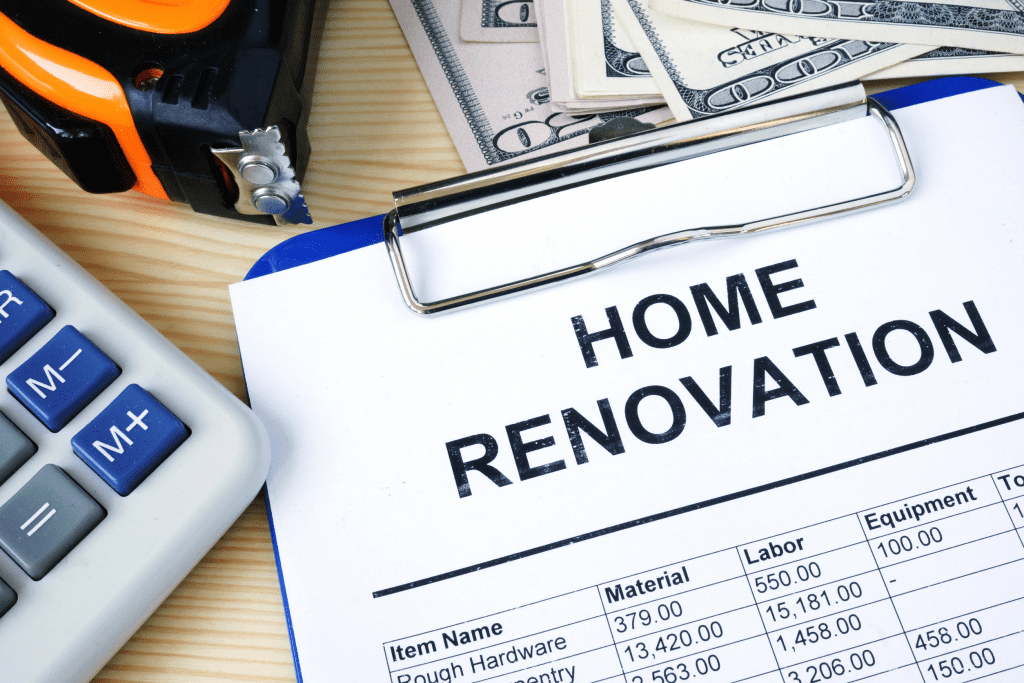
If you thought we’d give you advice on how to economize on material or how to cut corners on your remodeling project, tough luck. There’s no way to do quality work by saving on the material or evading essential aspects of a renovation. More importantly, it is impossible to get an expected return on investment by skimping during any stage of home remodeling. There are, however, ways to reduce home renovation costs and get the envisioned result. These steps all belong in the preparation phase, right where you are now.
1. Outline at the start

Investment in real estate is one of the most significant expenses in one’s life. It doesn’t matter if people are trying to save when building a house or when renovating an existing home. Hence, it doesn’t surprise that everybody tries to make savings wherever they can, whenever they can.
The best way to start the process of home renovation is to plan it in detail. Inspecting the house, putting all needed repairs on a list, and determining the extent of renovation is the first part. It sets a basis for smart budgeting that comes later.
Why is planning so important? It allows you and your chosen contractor to predict potential issues along the way. Every repair that comes out as necessary but wasn’t accounted for will raise the renovation costs. Often, it may extend or even halt the renovation project.
2. Take the ROI into account

Some repairs are urgent, and some can wait for a better moment. The trick to determine which ones are vital stems from the expected return on investment. If you’re renovating your home before the sale, ROI plays a vital role.
However, if you plan to live in your house for a long time before moving out again, consider the renovations that will speed up your home appreciation.
In other words, repainting your walls is a quick and affordable solution to quickly raise the value of your home. Adding another bathroom is more costly but will create higher ROI long-term.
3. Set up a reasonable budget

Setting up a budget is the most responsible part of the planning process. Also, stick to the mid-range price points and you should be all right, whether you pay for products or services.
To reduce home renovation costs, do not splurge on high-end fixtures if you can fix the existing ones. A bathtub is a bathtub; a reglazed tub will serve you just as well as the new one. Kitchen counters may not need changing but refinishing, just like the floors.
You can save on online purchases, too, as stores often provide discounts if you purchase directly on their website. It is an excellent way to save during the pandemic and remain safe. If you decide to buy renovation supplies, like paint, by yourself, consider another option: your contractors may get a discount on your behalf directly from the supplier.
4. Choose the right assistance

Take time to search and choose help for your project. Picking someone randomly can not only be costly but cause downright troubles along the way. It is vital to team up with:
- licensed specialists
- insured professionals
- experts with verifiable recommendations
- not the costliest but not the most affordable either.
Dealing with competition drives contractors to cut corners where they can, too. It means that lower costs might imply cheaper, low-quality material or an inexperienced workforce. On the other hand, high costs are not a guarantee of quality work either; not anymore. The strategy still works, though, as most people believe that expensive services indicate excellent results.
This becomes an increasingly difficult matter to deal with, especially if you plan to sell your home and move out after renovation. Just as hiring reliable movers can help prevent potential mishaps and mistakes during relocation, trustworthy but affordable contractors can make the renovation process smooth and stress-free.
To reduce home renovation costs and not regret it later, get three to five offers, and ask for recommendations you can verify and compare. Lastly, ask for confirmation that the contractors you decide upon have an active license and are insured, should the unforeseeable issues occur.
5. Ensure you have all the permits

The outlining phase has yet another vital role. It enlists all the works that might require a special building permit. Complying with building codes is critical if you want to avoid paying fines or sell your home without issues.
After creating a checklist of the intended renovation projects, the best course of action is to obtain the proper permits from local authorities and comply with the regulations. Although you might save a bit if you decide to do some DIY remodeling, hiring licensed professionals don’t really have an alternative.
Obligated to work by the codes, a reliable contractor saves you from extensive research, paying fines, teardown, and redoing your renovation. Aside from obtaining the correct permits on your behalf, a reputable builder will provide a warranty for their work. They will also save you time, and we all know that time is – money.
6. Find the best deals for home fixtures and hardware

You can save on various home hardware and fixtures if you look for the deals at your local home improvement store before and during the remodeling process. Not everything you might need for your renovation is at a discount at once, so you need to keep your eyes open for special offers even before you start working on your home. This way, you will buy quality products from reputable companies and save. There’s no need to pay the full price.
Speaking of which, if you need to renew your furniture but are reluctant to expand your budget, explore IKEA discounts and get the best deal. Savings can be considerable if you choose to buy at their Bargain Corner, shop during Black Friday, or use coupons.
Final Thoughts
Finally, pick up all your purchases yourself to reduce home renovation costs in total. Costly delivery of material and products can take a good chunk of your planned budget unnecessarily. Otherwise, plan your purchases smartly; some stores have a purchase limit for free deliveries. If their limit is too high, check out the competition!
